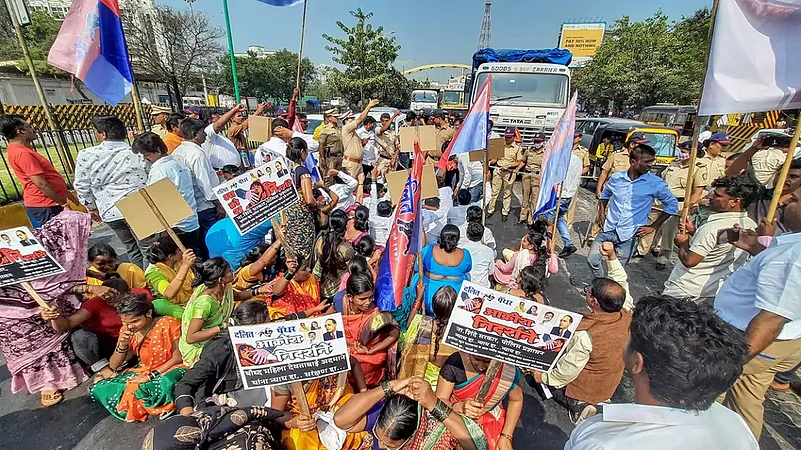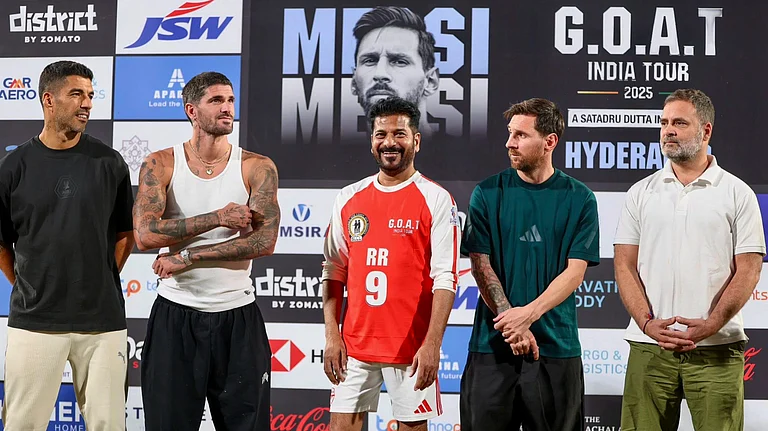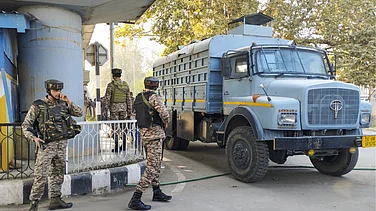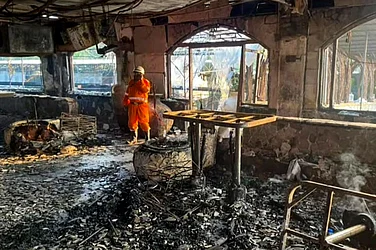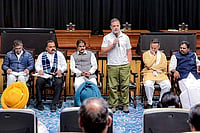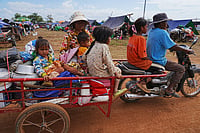Dalit Panther was one of the landmark organisations in the Ambedkarite movement. It had a background of the 1969 L. Elayaperumal Committee Report about atrocities on Dalits. Therefore, it was natural that the objective of the organisation, according to its founders, was to mount an attack on those who perpetrate atrocities against Dalits. Besides this, its workers waged cultural struggle also: to name a few instances, throwing chappals at the Shankaracharya who upheld the Chaturvarna system, agitation to discontinue the convention of felicitation of Vedic scholar Brahmins by the State government and burning the Gita publicly as a protest against its preaching.
They raised their voice against the discriminatory policy of not employing eligible Dalit candidates. Statements about how the national flag failed to protect Dalit women in an article published in the Marathi weekly, Sadhna, and a retort in response to the patriarchal argument expressed by well-known Marathi writer Durga Bhagwat that prostitutes should be respected for providing a necessary service to society, attracted the attention of Dalit youth and the media. This led the media and scholars to believe that every radical and aggressive act was the doing of the Dalit Panthers. However, along came many versions of the story. Gopal Guru, for example, wrongly attributes the credit of taking up the issue of scholarship raise to the Dalit Panthers. Arjun Dangle also does the same.
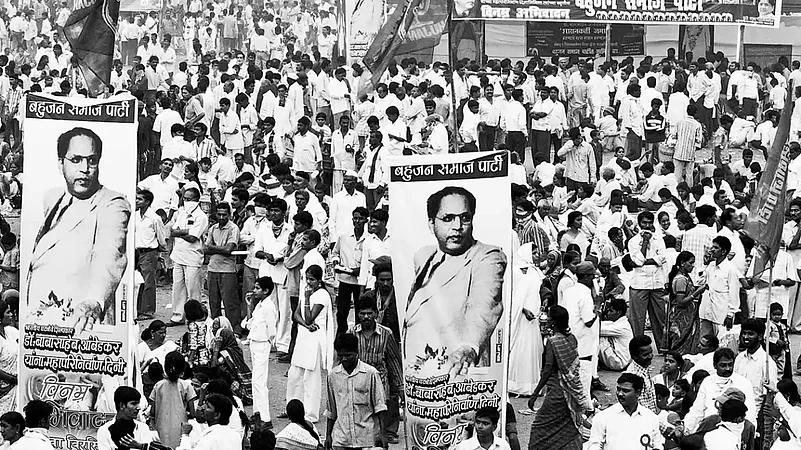
In fact, this particular agitation was started in Aurangabad by Dalit YuvakAghadi (DYA) in collaboration with some non-Dalit organisations. It had requested Dhale to lead that movement. However, he did not seem to have the faintest idea as to how crucial this issue was for Dalit students pursuing post-matriculation education. He flatly turned down the request saying, ‘‘I do not indulge in such begging businesses.” When the agitation picked up momentum, he ridiculed DYA activists alleging ‘‘they go with any Tom, Dick and Harry.’’ This was a baseless charge. Yuvak Kranti Dal a Socialist organisation mainly of non-Dalit youth and Republican Students Federation, an Ambedkarite group, were two of the prominent organisations collaborating with DYA. The movement caught the attention of Dalit students and attracted a huge following.
The Dalit Panthers became instantly popular among Dalit youth who were disillusioned due to the policies of the Republican Party of India (RPI). There was a constant incoming flow of Dalit youth, so much so that they had to inaugurate five units in a day. This left them with no time to train the new entrants in their ideology and strategies. The leaders independently decided programmes without following due process and consultation. Resultantly, two leaders, barely over two years of its foundation, organised two separate programmes on Dr Ambedkar’s death anniversary. Suspicion replaced mutual trust. Charges of fund misappropriation and secretly joining hands with mainstream political parties were levelled against each other. The publication of the outspoken Dalit Panther manifesto added fuel to the fire.
There were internal clashes in the Republican Party too . B.C. Kamble accused B.K. Gaikwad, a mass leader, of having Communist leanings. This had the background of forging an alliance for Samyukta Maharashtra. Kamble did not oppose this proposal in the meeting, but later on, he started using it as a tool against Gaikwad.
In the next two years, two senior Dalit Panther leaders expelled each other. Following this, the next year, both factions faced further division and finally DP was dissolved in 1977. However, this was not the end of DP. Some followers started working under the name Bhartiya Dalit Panther (BDP). BDP continued its march. The agitation for renaming Marathwada University exposed flaws in its ideology and policies. When a morcha was organised on the Executive Committee meeting of the university on 18 July 1977, non-Dalit youth had participated in it enthusiastically. However, BDP leaders told them that it was their own issue and asked non-Dalit youth to leave. This short sightedness and need to take sole credit weakened their cause. Renaming was an attempt to claim public space and such a social issue had to be resolved by mutual understanding. By driving away the Savarnas, BDP isolated themselves and also created a schism between Savarnas and Dalits. The non-Dalit students took out a morcha on 20 July, opposing the demand of renaming. Many students who were in favour turned against it because of BDP’s attitude. Failing to understand nuances, BDP saw all Dalits as pro-renaming and all non-Dalits as anti-renaming, which was untrue. It also strengthened the propaganda by the opponents of the renaming that the demand was supported by neo-Buddhists only and other Dalit castes had nothing to do with it.
BDP leaders’ response to the resolution passed in the Assembly reveals that they saw it as their final victory and so they naively accepted the change made in their demand. Opponents saw this as backtracking and became aggressive. As a result, Dalits in the BDP stronghold areas suffered a severe backlash. The Panthers were dumbfounded as they had not anticipated this. DYA prevented the violence. Marathwada was cut off from the rest of the world. DYA activists visited the burning villages in the region, taking along a journalist. By reporting it in Shree, a weekly, they brought to the notice of the outside world the brutality unleashed by the opponents. Next, they formed a committee to help the victims comprising of non-Dalits whose names held weight in society. It undertook two tours of the region and offered help to people. It formed the ‘Pro-renaming Students’ and Citizens’ Committee’ to plan the future course. Dangle claims that BDP took the initiative in forming this committee but BDP actually did not join this broader initiative. The committee declared the programme of Long March and people from several States participated in it. Further, it engaged in dialogue with opponents and convinced them to support the demand. Later on, an erstwhile opponent became the president of the committee and continued to struggle honestly till the mission was accomplished.
DYA worked in the university and colleges to resume disrupted dialogue between the two communities. Within less than two years, the pro-renaming people, comprising Dalits and non-Dalits, decided to contest the university students’ council elections unitedly and to field a Dalit candidate for the post of president. BDP stubbornly fielded a Dalit candidate belonging to the Vidarbha region. By doing so they strengthened the anti-renaming camp’s argument that the demand was mainly supported by Vidarbha Dalits and those belonging to Marathwada were not enthusiastic about it. This posed the danger of spoiling the amiable atmosphere created painstakingly. However, they had to be content with only seven Dalit votes. The Dalit candidate fielded unitedly won with a sizeable margin. Untimely dissolved DP, which withered away later on, is still remembered. Even after fifty years, it has left behind many valuable lessons for organisations to come.
(This appeared in the print as 'A Milestone Movement --- Hope and Disillusionment')
Prakash Sirsat was a full-time worker in an ambedkarite organisation. He took part in the scholarship raise movement and renaming marathwada university






